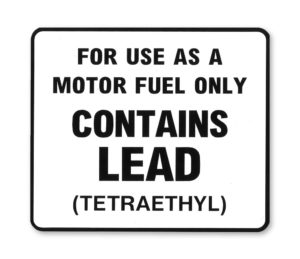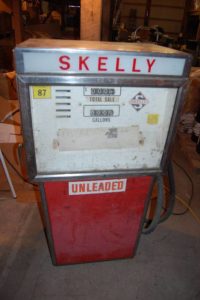
Leaded gasoline was born in 1921. GM researchers had been testing fuel blends since 1916, trying to stop engine knock. The problem was early, non-uniform detonation of fuels in the engine cylinder. Left unchecked, it could quickly ruin an engine.
So lead was added to the mixture at the refinery, knock problem solved.
Lead poisoning has been known to medical science since 100 BCE, when Greek writings described it.
Somehow, the harmful effects of spewing lead vapor into the atmosphere eluded the GM engineers. So leaded gasoline became the standard, and untold billions of gallons were burned over the years.
That process began to be reversed in 1975, when new vehicles were mandated to burn gasoline that didn’t contain lead. That year, unleaded gasoline showed up at the neighborhood gas station.
If you put leaded gas into a car that had a catalytic converter (which all unleaded vehicles possessed), it would quickly be rendered ineffective. You would be spraying pure pollutants into the atmosphere. That was bad.
So unleaded cars came with narrowed-down filler necks. Likewise, unleaded gas nozzles were narrower than their leaded-dispensing counterparts. So, the theory was, you would never put leaded gas into your vehicle by mistake.
Wrong.
First of all, a populace that didn’t like the idea of paying more for a fuel that had an ingredient LEFT OUT, and they rebelled. The most obvious solution was to rout out the restricted filler neck with a chisel or the like. Ugly, but effective. You could quickly bid adieu to your catalytic converter with a couple of fill ups of leaded gas.
Another device that was sold in numbers of thousands was a little neck-down sleeve that would fit onto the end of a leaded gas nozzle. It would allow the leaded fuel to be dispensed into an unleaded tank.

Either way, a very large number of cars that would ostensibly burn cleaner were not given the chance, because of unleaded fuel’s two or three cents-per-gallon higher cost.
Hey, don’t blame ME. I had a 1973 Toyota Celica in those days. The manufacturer actually recommended burning unleaded, so I did!
However, the bypassers soon noted degraded performance of mileage and power from their doctored vehicles, so within a couple more years, everyone was burning unleaded as directed.
Leaded gas finally pretty much disappeared from the US market in 1986. It was still available for a time for off-road use, but low demand caused it to vanish. A 1994 study showed that US blood-lead levels declined by 78 percent from 1978 to 1991.
Today, the familiar “Contains lead” signs are collectors’ items. So are the neck-down “emergency” fill up aids. But we, and our kids and grandkids, have one less thing to worry about as our bodies walk around with much less lead in them than before.